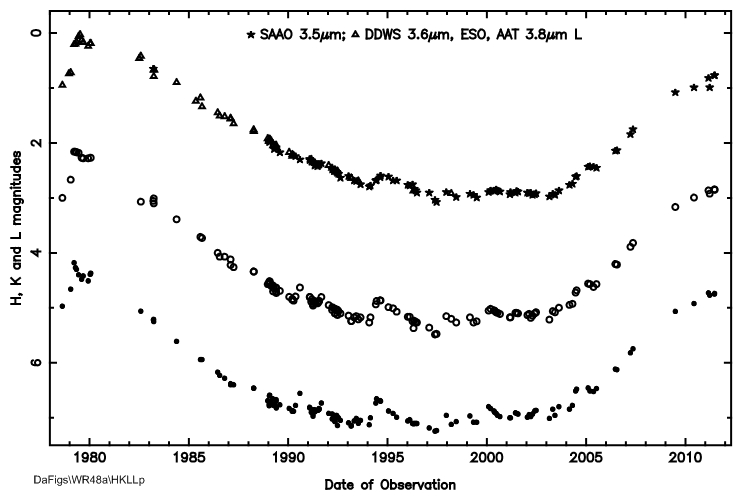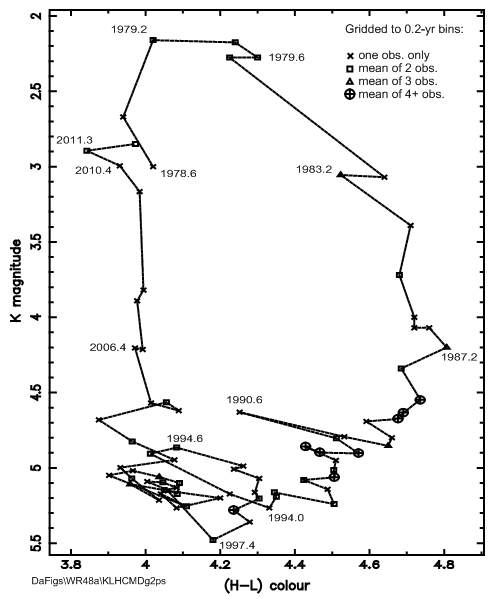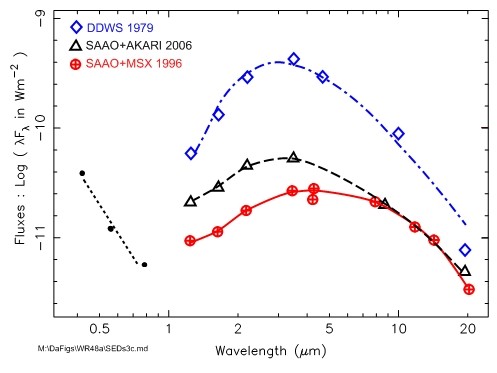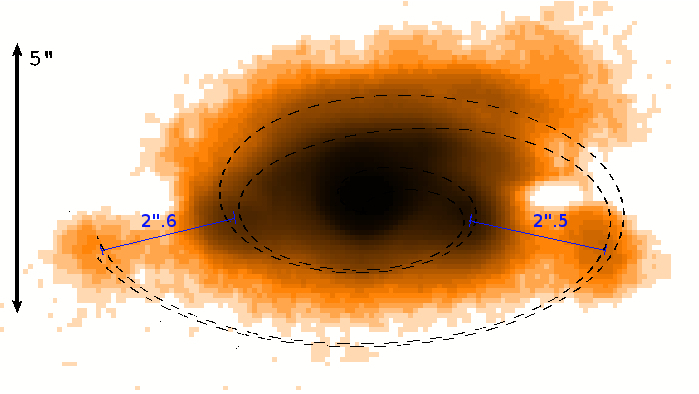The longest period (32.5 y) dust-maker WR 48a
| Colliding-wind binaries |
| WR104 pinwheel |
| Episodic dust-makers |
| WR140 orbital motion |
| Massive Stars Web |
| LIAC 2010 Proceedings |
| Stellar Winds in Interaction |
| Co-ordinates J2000 |
| R.A. 13 12 39.65 Dec. -62 42 55.8 |
8.9"N and 2.3"E of CPD -62°3058 |
| X-ray source WR 48a is a most luminous X-ray source (Zhekov et al. 2011) — further evidence for strongly colliding winds. |
The Wolf-Rayet dust maker with the longest period appears to be WR 48a, whose period inferred from recurrence of maxima in its infrared (IR) emission and IR image of its dust is about 32.5 years. It was the first dust-making Wolf-Rayet star to be identified from its strong dust emission in the IR by Danks et al. (1979) in their survey of the H II region G305.5 +0.0. They observed WR 48a to be undergoing an infrared outburst similar to that undergone in 1977 (Williams et al. 1978) by the prototype episodic dust maker HD 193793 (= WR 140). Danks et al. tracked the rise of the IR emission to a maximum in 1979 and its initial fading.
| Right: Infrared image of WR 48a and the two star clusters Danks 1 and Danks 2
in the G305 star-forming region extracted from the near-IR
Zoomable
Mosaic of the Milky Way built from the VISTA VVV and UKIDSS GPS infrared surveys.
This extract is about 1⁄8° wide. (The dark spots in the middles of the brightest star images, including WR 48a, are a consequence of saturation in the images.) The clusters and the G305 star formation region have been the subjects of many studies, e.g. Davies et al. (2012). They are located about 3.5 kpc from the Earth. |
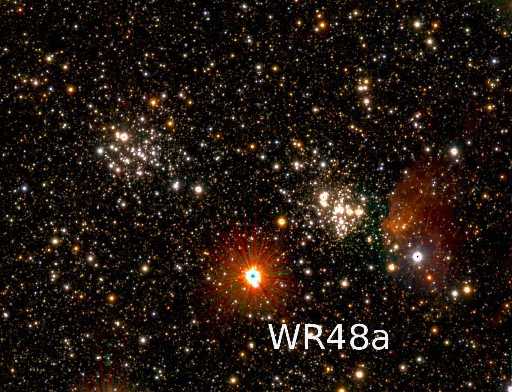 |
The tracking of the fading dust emission by IR photometry was extended to 1986 by Williams, van der Hucht & Thé (1987), who also argued from the approximately equal strengths of the C III 5696Å and C IV 5808Å spectral classification lines in their spectrum that WR 48a was a WC8 type star. Further spectroscopy (Williams et. at. 2012) revealed that the binary companion to the WC8 star was about 3× (1.2 mag.) brighter than the WC8 star in the visible and not an ordinary OB star but a more luminous emission-line star. The classification of the companion was refined using higher resolution spectroscopy to a WN8h type WR star by Zhekov et al. (2014).
The IR photometry was continued (Williams et. at. 2012) until the IR emission had returned to the level at which it was first observed by Danks et al. in 1978.
